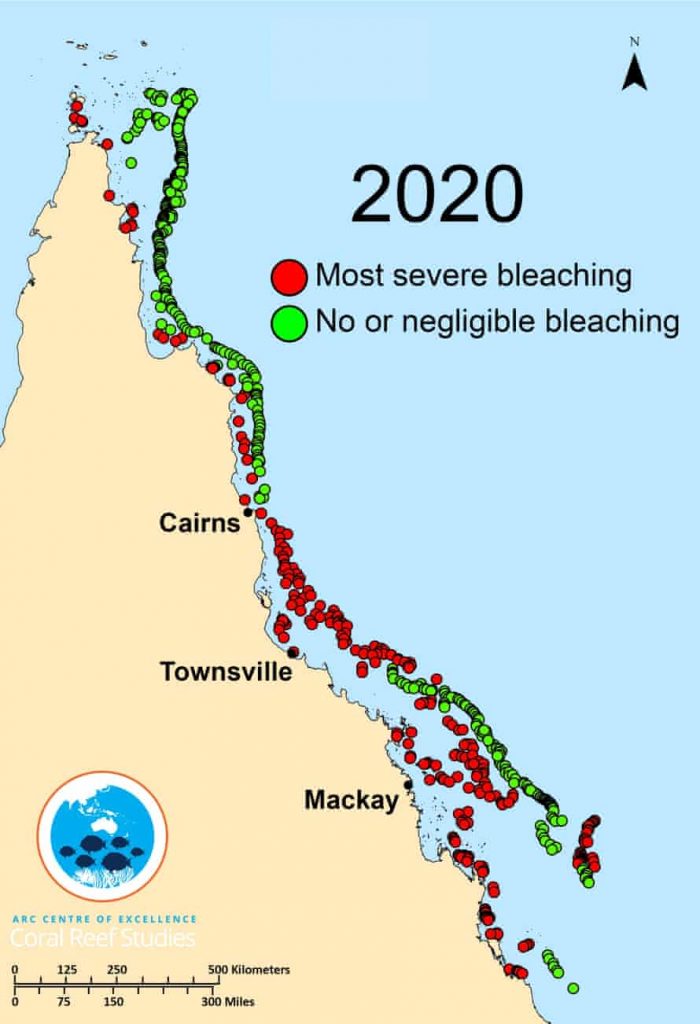Context:
The UN World Heritage Committee said in a draft report that “there is no possible doubt” that the network of colourful corals off Australia’s northeast coast was “facing ascertained danger” and the committee’s proposal to downgrade the Great Barrier Reef’s World Heritage status has irked Australia.
Relevance:
Environment and Ecology (Conservation of Environment and Ecology, Environmental Pollution and Degradation)
Dimensions of the Article:
- Great Barrier Reef
- About Coral Reefs
- Highlights of the UN Committee’s report
- Why does Australia irked by the report?
Great Barrier Reef
- The Great Barrier Reef, located in the Coral Sea (North-East Coast), off the coast of Queensland, Australia, is the world’s most extensive and spectacular coral reef ecosystem composed of over 2,900 individual reefs and 900 islands.
- This reef structure is composed of and built by billions of tiny organisms, known as coral polyps which are tiny, soft-bodied organisms and their base which is a hard, protective limestone skeleton called a calicle, forms the structure of coral reefs.
- It was selected as a World Heritage Site in 1981.

About Coral Reefs
- Indonesia has the largest coral reef area in the world and the Great Barrier Reef of the Queensland coast of Australia is the largest aggregation of coral reefs.
- India, Maldives, Sri Lanka and Chagos have the maximum coral reefs in South Asia.
- Coral Reefs protect humanity from natural calamities acting as a barrier, provide revenue and employment through tourism and recreation and also provide habitats for fishes, starfish and sea anemones.
- Coral blocks are used for buildings and road construction, the lime supplied by corals is used in cement industries and coral reefs may also be used in jewellery.
- India has four coral reef areas: Gulf of Mannar, Andaman and Nicobar Islands, Lakshadweep islands and the Gulf of Kutch.
Risks and threats to coral reefs
- Due to anthropogenic activities such as coastal development, destructive fishing methods and pollution from domestic and industrial sewage.
- Due to increased sedimentation, over-exploitation and recurring cyclones.
- Coral diseases such as black band and white band due to infectious microorganisms introduced by the human population that live on the coastal regions.
Highlights of the UN Committee’s report
- Scientists say that the coral reef ecosystem has suffered three major bleaching events since 2015 due to severe marine heatwaves.
- The report recommended that the world’s biggest coral reef ecosystem should be added to Unesco’s list of World Heritage in Danger when the committee considers that question in July.
- Placement on the ‘‘in-danger list’’ is not considered a sanction and some nations have their sites added to gain international attention and help to save them.

Why does Australia irked by the report?
- As many as 53 sites are currently on the List of World Heritage in Danger.
- The latest recommendation by the UN committee comes as a setback as Australia lobbied furiously for years to stay off the endangered list.
- The Great Barrier Reef losing its World Heritage Site status list could potentially reduce its attraction to tourists.
- The threat of losing the World Heritage Site could also impact thousands of jobs dependent on about 5 million people who visit the Great Barrier Reef each year.
-Source: Hindustan Times, Indian Express



